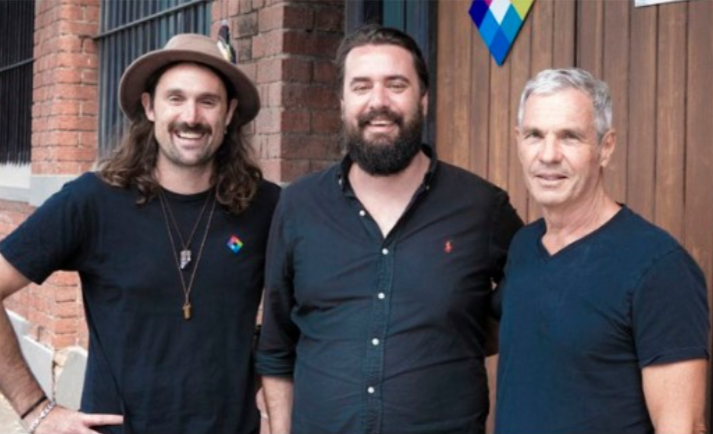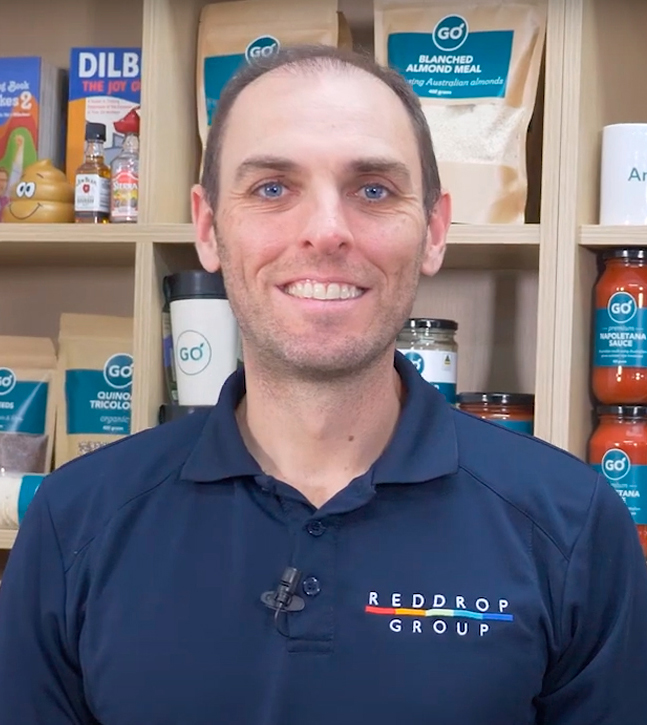
Without access to the sophisticated technological tools and dedicated data teams that the retail giants prosper from, are the mid-market retailers permanently disadvantaged in the fight for market share? Not if tapestry has anything to do with it.
For decades, mid-market retailers have struggled to keep pace with larger competitors when it comes to technology adoption. Historically, access to cutting-edge innovation was out of reach due to high costs, the need for specialised talent, and the sheer reality of juggling day-to-day operational challenges. But in a world where competition is increasingly driven by efficiencies gained from technology, those left behind risk losing more than just market share. They risk their very survival.

“We see this technology as a significant step forward for independent retailers,” says Michael Reddrop, tapestry user and CEO of the Reddrop Group, an operator of many FoodWorks and IGA supermarkets throughout Victoria and Southern NSW. “Retailers need to continue to embrace technology or risk being left behind. The chains are investing in AI and other technology like I have never seen. As labour costs soar and engagement and productivity plummet, the only way to stay relevant is through our ability to harness and optimise the data within our reach.”
In Australia, large retail giants such as Woolworths have long leveraged technology to dominate the grocery, liquor, and petrol and convenience sectors. Their ability to harness data, optimise inventory, and personalise customer experiences has cemented their position at the top. Meanwhile, mid-market retailers – those who form the backbone of local economies – have struggled to compete without access to these sophisticated tools. Is it too late for mid-market retailers? Are they permanently disadvantaged in the fight for market share? Not if tapestry has anything to do with it.

tapestry, an Australian-owned and operated company, is changing the game. By bringing real-time intelligence to both retailers and suppliers, it’s turning technology from a barrier into a competitive advantage. The company’s mission is clear: to empower mid-market retailers with the same, if not better, technological firepower that their larger competitors have enjoyed for years.
“We’re levelling the playing field when it comes to technology,” says Tapestry founder Christopher Bartlett. “For too long, mid-market retailers have been at a disadvantage, unable to compete with larger players that have dedicated data teams. We’re here to change that.”
Mr. Bartlett, a machine learning expert with more than 15 years of experience leading innovation at Uber, Hoyts, and Kmart, recognised a major gap in the market. Mid-market retailers lacked the tools to leverage their own data, putting them at a competitive disadvantage.
In 2020, he founded Tapestry with the goal of building a data infrastructure that would enable retailers and suppliers to collaborate in real time – reshaping the retail industry in the process.
Why does real-time data matter? Imagine a supermarket selling a range of bread products each day. Traditionally, suppliers would receive end-of-day sales data after the fact, limiting their ability to optimise future allocations. The mix of product sales in the category is skewed by the number of substitutes available. It leaves the category – especially promotions and favoured SKUs – depleted or empty early in the day. This obviously diminishes customer satisfaction.
However, with real-time intelligence, suppliers can gain insights into the order of sale across their product range over time. This allows bread companies to refine their replenishment strategies, ensuring better allocation and distribution in the future. Rather than just responding to stockouts, they can proactively adjust supply based on demand patterns – improving availability and reducing waste.

Enabled by a retailer’s point-of-sale provider, Retail+ delivers real-time intelligence across stores, clusters, or groups. This allows retailers to:

“The technology is next level,” said Adrian Corcoris, Group Buying Manager at Reddrop Group. “It gives me a huge advantage when working across a store or group, allowing us to make better, faster decisions in optimising our inventory.”
One of the many ways retailers are using Retail+ is to seamlessly de-list SKUs across a store group or cluster, or identify out-of-stock top-selling items in real time as soon as they occur. Additionally, the ability to create a new income stream through data monetisation has a significant impact on how businesses drive margin.

Supply+ grants suppliers access to real-time insights from their retail partners, enabling them to:

At a recent conference in Sydney, Bradley Cooper, GM of Commercial Insights at Coca-Cola Euro Pacific Partners, stated:
“The most precious assets retailers have are their data, their physical space, and their relationship with their customers. The ability to access real-time shelf-level intelligence is a step-change in how suppliers and retailers can work together to better serve the customer, which in turn drives growth for all involved.”
Suppliers are using the technology to actively respond to market changes within their respective categories, gaining a better understanding of pricing, the effectiveness of their promotions, product placement, competitor performance, and whether their retail partners are compliant with their trading terms.
For direct suppliers, Tapestry’s products make accessing data insights not only affordable and viable but also easily attainable. Previously, obtaining reports from lagging data aggregators was both costly and slow. Tapestry provides a strong advantage to direct suppliers while also creating a significant new revenue stream for retailers by enabling them to monetise their data directly and allowing suppliers to gain real-time intelligence from their retail partners.
One of Tapestry’s key advantages is its ability to integrate seamlessly with any POS system, eliminating the friction traditionally associated with adopting new technology. Several POS providers already support Tapestry, with more integrations rolling out in the coming months.

“To deliver best-in-class software solutions, we partner with leading technology providers,” says Emily Adams, General Manager at Surefire Systems and a Tapestry partner. “Tapestry empowers retailers with valuable data insights, enabling smarter decisions and driving business growth. As an early enabler of this solution, we’re proud to give our customers a competitive market advantage.”
Beyond individual retailers and suppliers, tapestry has also introduced a Collectives feature, allowing groups, co-ops, and wholesalers to share data in real time, enabling:

“Access to real-time, store-level data is providing us with unparalleled insight into winning market share for retailers and better serving our customers every day,” said Silvestro Morabito, FMCG industry veteran. “Tapestry gives independent retailers the ability to level the playing field with the major chains in terms of data analytics and supplier engagement through taking full control of their own data. The end result is an improved customer offering in store which results in market share gains.”
At the core of Tapestry’s success is its approach to data ownership and monetisation.
“We’re a data infrastructure and analytics company,” Mr. Bartlett said. “You own your data. Think of us as the pipes through which information flows. This transparency ensures that retailers remain in full control of their insights while also benefiting from new revenue streams.”
One of Tapestry’s most innovative features is its ability to help retailers monetise their data. By selling real-time shelf-level insights to suppliers, retailers can unlock an additional revenue stream while simultaneously strengthening supplier relationships.
“Let me make this clear,” Mr. Bartlett said. “This is not about data. It’s about a closer working relationship between brands and retailers so they can better serve the shopper. You’re in complete control of your information. We’ve designed it that way – both technically and legally.”
Tapestry’s emergence signals a pivotal moment for mid-market retailers. No longer do they have to be at a disadvantage when competing against larger players. With real-time data, enhanced supplier collaboration, and new revenue opportunities, they’re not just catching up — they’re gaining an unfair advantage.
The message is clear: the retail game has changed, and mid-market retailers finally have the tools to play to win.
Tapestry is available now through leading POS providers. Retailers interested in leveraging this revolutionary technology can reach out to their POS provider or connect directly with the Tapestry team at tapestry.ai.